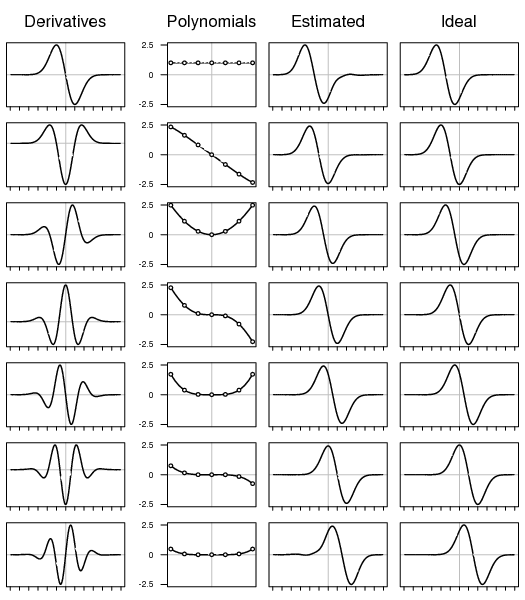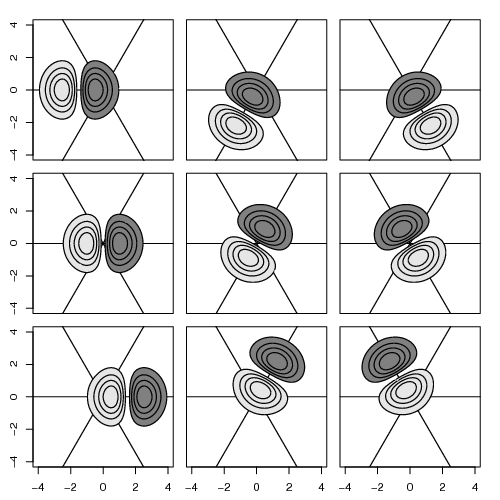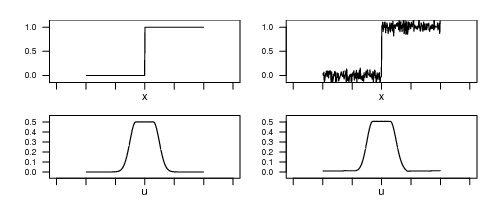Simple cells in the visual cortex can be understood as oriented linear filters. Complex cells, while also oriented, are invariant to small translations of the image. This nonlinear property can be modelled by a quadrature pair of filters, the responses of which are squared and summed.
This kind of 'energy model' is not very robust when applied to real images, and nor is it easy to analyze mathematically. I have proposed an alternative model of the complex cell, based on Gaussian derivative filters. If a basis of several derivative filters is available at a given point, then a range of shifted first derivative filters can be synthesized (e.g. by Taylor approximation).
Local shift-invariance can now be achieved by taking the maximum of the synthetic filter responses. Example derivatives, weighting functions, and shifted filters (estimated and ideal), are shown below. The Nth estimated filter is obtained from a linear combination of the derivatives, each weighted by the Nth dot on the corresponding polynomial. For example, the 4th estimated filter is at zero-shift; hence the 4th dot is at zero on each polynomial, except the first.

An advantage of the differential model in 2D is that it combines with the steerability of the Gaussian derivative filters. This means that a common basis can be used to synthesize complex cells at any orientation. An example is shown below; each column represents a complex cell at a different orientation. All nine filters were synthesized from the same basis (in fact, the orientation and shift dimensions could be sampled as finely as desired).

The complete nonlinear filter, including the maximum operation is invariant to local signal-shifts. Here is a step-edge signal (top), and the complex response as a function of shift u (bottom). The right-hand column shows the same test, with noise added to the signal:

The local invariance can be seen from the plateau in the response function. Please see the following publications for details: